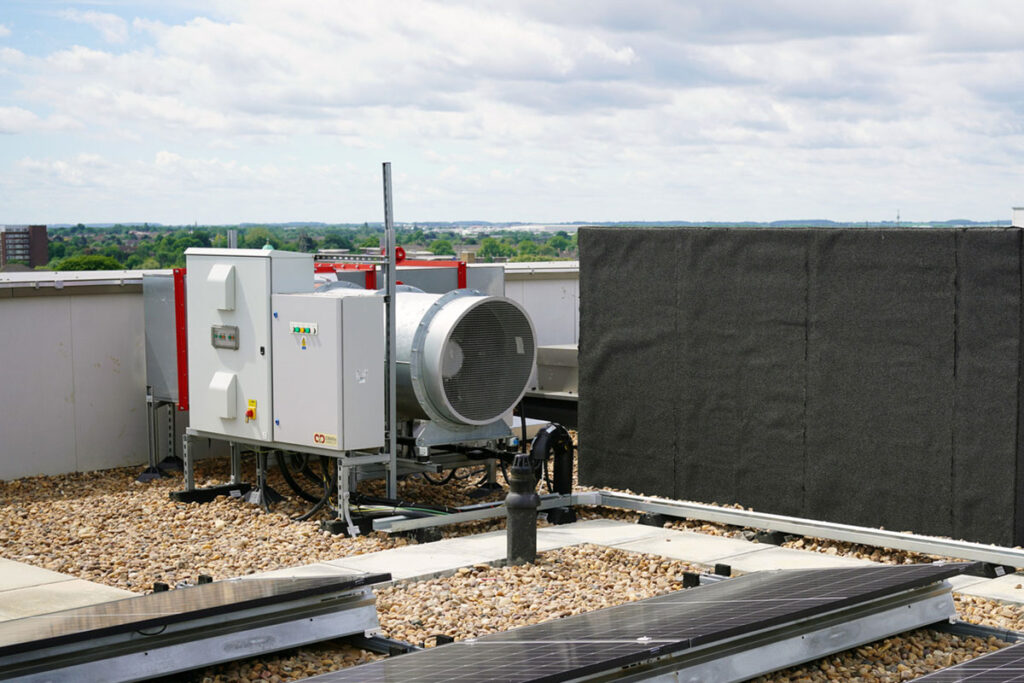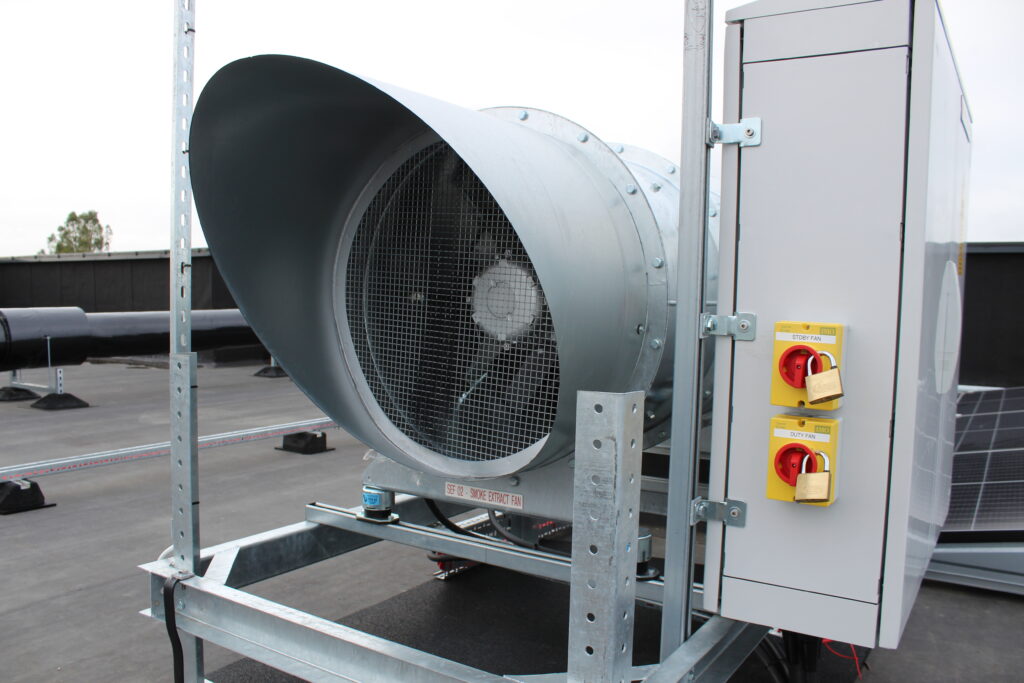Responding to the tragedy and Grenfell Tower and the following investigations that revealed an absence of fire safety incorporated in the early stages of high-rise residential projects, the government has announced it’s pledge to transform the regulatory framework for fire safety.
Consulted on its reforms in June 2019 in ‘Building a Safer Future: Proposals For Reform of the Building Safety Regulatory System’, the government was recommended a planning gateway before planning permission is granted to applicants. This planning gateway would result in applicants submitting fire statements to local planning authorities who would proceed to consult the fire and rescue authority before granting planning permission. If implemented and adhered to, this will ensure that architects and developers are considering fire safety in the early stages of high-rise projects.
The government published their response to this consultation in April 2020, with Amendments to The Town and Country Planning (Development Management Procedure) being made and several new requirements have been introduced into the planning system. A significant change is the introduction of Planning Gateway One into the Building Safety Bill, a policy likely to take effect from the 1st of August 2021.
The Government have outlined three gateway points for developments/buildings to go through:
- Planning gateway one: applicants demonstrate that the planning application incorporates thinking on fire safety (where it relates to land use planning).
- Gateway two (technical design and construction phase): bolsters the current building control deposit of plans stage with the Building Safety Regulator (BSR) as the only option of building control body for in-scope buildings. A building control application will be required, and this gateway provides a ‘hard stop’ where construction cannot begin until the BSR has approved the building control application.
- Gateway three: (the current building control completion/ final certificate stage): will provide a ‘hard stop’ at which the BSR undertakes final inspections and issues a completion certificate. Prescribed documents and information on the as-built building will be required, and information must be handed over to the person(s) responsible for the building in use (accountable person in occupation).
The Ministry of Housing, Communities & Local Government (MHCLG) has published guidance outlining the responsibilities of planning applicants and local authorities. To support and assist preparation for its implementation, we have summarised the guidance and provided some much-needed guidance for architects, developers and anyone needing to use the gateway.
What is Planning Gateway One?
Within Dame Hackitt’s Report, it was advised that there is a need to transform the approach to fire and building safety:
“Some minimum requirements around fire safety will need to be addressed when local planning authorities are determining planning applications and will require input from those with the relevant expertise.”
This and the overall efforts to establish a reformed building safety regulatory system would later be supported by the ‘Building a Safer Future’ consultation’. As part of the consultation, plans were made to introduce Planning Gateway One.
Planning Gateway One requires:
- The Developer to submit a fire statement setting out fire safety considerations specific to the development with a relevant application for planning permission for development that involves one or more relevant buildings.
- Establish the Health and Safety Executive as a statutory consultee for relevant planning applications.
Why is it being introduced?
Project Gateway one’s purpose is to ensure fire safety matters (as they relate to land use planning) are incorporated at the planning stage of high-rise residential projects. This will also require the Executive Agency for Health and Safety (HSE) to review the Developer’s fire safety plans. It is expected that Specialist fire safety expertise will be provided to local planning authorities on a statutory basis.
The changes will be introduced through secondary legislation ensuring that applicants and decision-makers are considering planning issues relevant to fire safety including the site layout, firefighting considerations, and access for fire appliances. The opening of dialogue between fire safety specialists and architects/developers at project inception will result in better schemes and safer buildings overall.
What type of buildings are “relevant buildings”?
- Contain two or more dwellings or educational accommodation and
- Meet the height condition (18m or more in height, or 7 or more storeys whichever is reached first).
“Dwellings” includes flats and “educational accommodation” meaning residential accommodation for the use of students at boarding school or in later stages of education (These definitions may be subject to change under the Building Safety Bill to achieve consistency across all three gateways).
What is a fire statement?
Fire statements will support the consideration of information on fire safety matters relevant to land use planning matters (e.g. layout and access). This will also apply to the evidence of considerations, as they relate to planning, have been incorporated into the planning application.
What information must a fire statement contain?
Fire statements must be submitted on the required form which has been published by the Secretary of State and contain the particulars specified or referred to in the form, including information about (not exhaustive list):
- The principles, concepts and approaches relating to fire safety that have been applied to each building in the development.
- The site layout.
- Emergency vehicle access and water supplies for firefighting purposes.
- What, if any, consultation has been undertaken on issues relating to the fire safety of the development; and what account has been taken of this.
- How any policies relating to fire safety in relevant local development documents have been considered.
Should a fire statement include information for the whole site or just certain buildings?
Yes – it will be required for applications to include information on the entire development as set out on the plan. This will also need to identify the land to which the application relates to. This is due to fire safety matters relevant to land use planning have an impact on the external layout of a site, including the spaces between buildings.
How are fire statements different from the requirements of building regulations or the Fire Safety Order?
The fire safety matters contained in the fire statement are relevant only to the extent they are relevant to land use planning. The level of detail and focus of information here should not contain the breadth and depth of information on fire safety which will be submitted at the building control application stage.
Requirements of the fire statement at the planning stage will not duplicate or require compliance with the building regulations or the Fire Safety Order, and local planning authorities will not be responsible for any building regulation matters or the enforcement of building control requirements.
Use of Fire Statements Within Applications
An application for planning permission for development which involves:
- The provision of one or more relevant buildings, or
- Development of an existing relevant building
- Or development within the curtilage of a relevant building
Must be accompanied by a fire statement unless an exemption applies.
What are the exemptions to the requirement to submit a fire statement with an application for permission?
Applications for planning permission will be exempt from the requirement to submit a fire statement where:
- The application is for a material change in use of a relevant building and the material change of use would result in the building no longer being a relevant building.
- The application is for a material change in the use of land or buildings within the curtilage of a relevant building.
- The application is for outline planning permission.
- The application is for permission to develop land without compliance with conditions under section 73 of the Town and Country Planning Act 1990.
Applications for outline planning permission will be exempt from the requirement to submit a fire statement.
Is a fire statement required for a change of use application?
Applications for permission for a material change of use of land or buildings will require a fire statement unless the application is for:
- A material change in use of a relevant building and the material change of use would result in the building no longer being a relevant building.
- A material change in use of land or buildings within the curtilage of a relevant building.
Consultation Stage
Should an applicant consult HSE before applying?
Early and timely engagement between developers, statutory consultees and fire safety specialists at the pre-application phase is important in helping to address issues and opportunities early on and avoid delays occurring after an application has been submitted.
When must a local planning authority consult HSE?
A local planning authority will be required to consult HSE before granting planning permission for:
- A development that will involve or is likely to involve the provision of a relevant building.
- A development of an existing relevant building except where the development consists of a material change in use of a relevant building which would result in the building no longer being a relevant building.
- A development within the curtilage of a relevant building except in the case of development consisting of a material change in use of land or buildings within the curtilage of the building.
A local planning authority must consult HSE on fire safety before granting permission to develop land without compliance with conditions if the authority considers it appropriate to do so (see Article 20 of the Town and Country Planning (Development Management Procedure) (England) Order 2015).
What are the responsibilities of HSE as a statutory consultee?
Guidance on the role and responsibilities of statutory consultees is set out in the planning practice guidance.
Should fire statements be included in the Planning Register?
Local planning authorities will be required to place a fire statement submitted with an application for planning permission on Part 2 of the Planning Register. Inclusion in Part 2 of the Planning Register is only required where such a fire statement is submitted to meet the statutory requirements.
Does Planning Gateway One apply to schemes utilising a Permitted Development Right?
It is planned for MHCLG to introduce a fire safety prior approval for residential accommodation, that is being delivered under the permitted development regime, and is in the scope of planning gateway one.
For more information on the government’s guidance please go to: https://www.gov.uk/guidance/building-safety-planning-gateway-one#annex-b-draft-statutory-instrument
Get in touch today to discuss your next high-rise residential project and ensure that your project has a competent fire strategy which is compliant and effective in safeguarding your residents.



